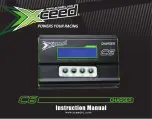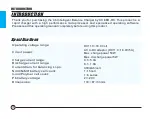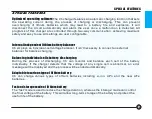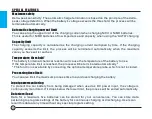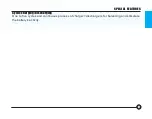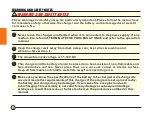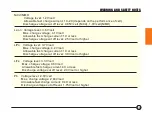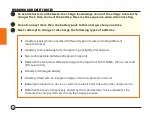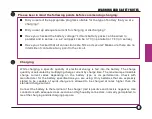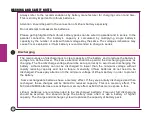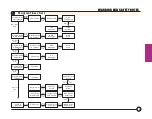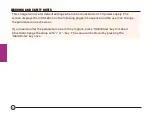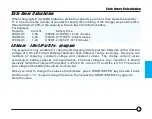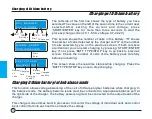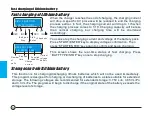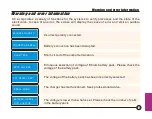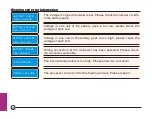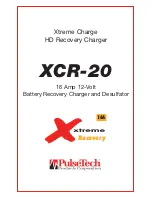
LiFe
V.Type 3.3V
LiFe
V.Type 3.3V
LiPo/LiIo/LiFe
CHK Time 10 min
NiCd Sensitivity
D.Peak Default
NiCd Sensitivity
D.Peak Default
LiFe
V.Type 3.3V
LiPo/LiIo/LiFe
CHK Time 10 min
NiMH Sensitivity
D.Peak Default
NiCd Sensitivity
D.Peak Default
USB/Temp Select
Temp Cut-Off 80C
INC
INC
INC
INC
INC
INC
INC
INC
DEC
DEC
DEC
DEC
DEC
DEC
DEC
DEC
-
-
-
-
+
+
+
+
The C6 detects the cell count of lithium battery automatically at the
beginning of charge or discharge process. A battery might not be
detected if it has been over-discharged. You can set the time limit to
verify the cell count by the processor. Normally, 15 seconds are enough
to detect the cell count correctly. You have to extend the time term limit
for batteries of large capacity. If the cell count is wrong or you set too
long of a time limit the charge or discharge process may come to an end
within the time limit. This may cause a fatal error. You have to extend the
time term if the processor detect the cell count incorrectly at the
beginning of charge or discharge process. Otherwise, use the default
value.
This shows the trigger voltage for automatic charge termination of NiMH
and NiCd batteries. The valid value ranges from 5 to 20 mV per cell.
Setting the trigger voltage higher may lead to overcharging, whereas
setting it lower brings a premature termination. Please refer to the
technical specification of the battery-(NiCd default:12mV, NiMH
default:7mV).
The screen shows the nominal voltage of lithium battery. There are
three types of lithium batteries: LiFe (3.3V), Li-ion (3.6V) and LiPo
(3.7V). It is critically importance that you set the charger in order to
check the type of battery you have. It will lead to damage the battery
and cause fire or explosion if failure to do so.
-
-
+
+
WARNING AND SAFETY NOTES
14
INC
INC
DEC
DEC
NiCd Sensitivity
D.Peak Default
USB/Temp Select
USB Enabled

